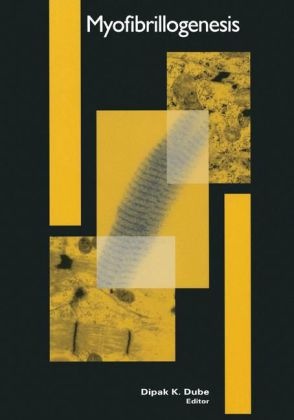Read more
Myofibrillogenesis has been studied extensively over the last 100
years. Until recently, we have not had a comprehensive understanding
of this fundamental process. The emergence of new technologies in
molecular and cellular biology, combined with classical embryology,
have started to unravel some of the complexities of myofibril assembly
in striated muscles.
In striated muscles, the contractile proteins are arranged in a highly
ordered three dimensional lattice known as the sarcomere. The assembly
of a myofibril involves the precise ordering of several proteins into
a linear array of sarcomeres. Multiple isoforms in many of these
proteins further complicate the process, making it difficult to define
the precise role of each component. This volume has been compiled as a
comprehensive reference on myofibrillogenesis.
In addition, the book includes reviews on myofibrillar disarray under
various pathological conditions, such as familial hypertrophic
cardiomyopathy (FHC), and incorporates a section on the conduction
system in the heart. Much of the information in this volume has not
been described elsewhere. Presented in a manner to be of value to
students and teachers alike, "Myofibrillogenesis" will be an
invaluable reference source for all in the fields of muscle biology
and heart development.
List of contents
Foreword - Roger R. Markwald Preface Section I: Assembly of
myofibrillar proteins in striated muscle 1. Myofibrillogenesis in
cardiac muscle - Joseph W. Sanger and Jean M. Sanger 2. Dynamics of
contractile proteins constituting myofibrils in living muscle cells -
Yutaka Shimada, Tin Moe Nwe, Fukuko Hasebe-Kishi, and Homare Suzuki
3. Emergence of the first myofibrils and targeting mechanisms
directing sarcomere assembly in developing cardiomyocytes - Elisabeth
Ehler and Jean-Claude Perriard 4. Tropomodulin: An important player
in cardiac myofibrillogenesis - Catherine McLellan and Carol C.
Gregorio Section II: Maintenance and manipulation of myofibrillar
organization 5. Maintaining the fully differentiated cardiac
sarcomere - Daniel E. Michele and Joseph M. Metzger 6. Manipulation
of myofibrillogenesis in whole embryonic hearts - Robert W. Zajdel,
Matthew D. McLean, Syamalima Dube, Larry F. Lemanski, and Dipak K.
Dube Section III: Regulation of expression of myofibrillar proteins
7. Molecular regulation of cardiac myofibrillogenesis: Roles of
serum response factor, Nkx2-5 and GATA-4 - Robert J. Schwartz, Jorge
Sepulveda and Naraswathamy S. Belaguli 8. Regulation and
Summary
Myofibrillogenesis has been studied extensively over the last 100
years. Until recently, we have not had a comprehensive understanding
of this fundamental process. The emergence of new technologies in
molecular and cellular biology, combined with classical embryology,
have started to unravel some of the complexities of myofibril assembly
in striated muscles.
In striated muscles, the contractile proteins are arranged in a highly
ordered three dimensional lattice known as the sarcomere. The assembly
of a myofibril involves the precise ordering of several proteins into
a linear array of sarcomeres. Multiple isoforms in many of these
proteins further complicate the process, making it difficult to define
the precise role of each component. This volume has been compiled as a
comprehensive reference on myofibrillogenesis.
In addition, the book includes reviews on myofibrillar disarray under
various pathological conditions, such as familial hypertrophic
cardiomyopathy (FHC), and incorporates a section on the conduction
system in the heart. Much of the information in this volume has not
been described elsewhere. Presented in a manner to be of value to
students and teachers alike, "Myofibrillogenesis" will be an
invaluable reference source for all in the fields of muscle biology
and heart development.

